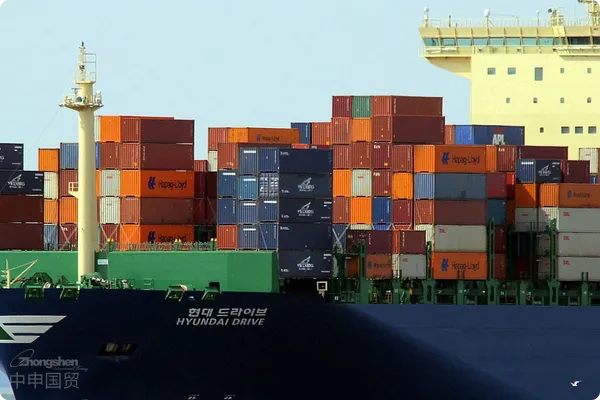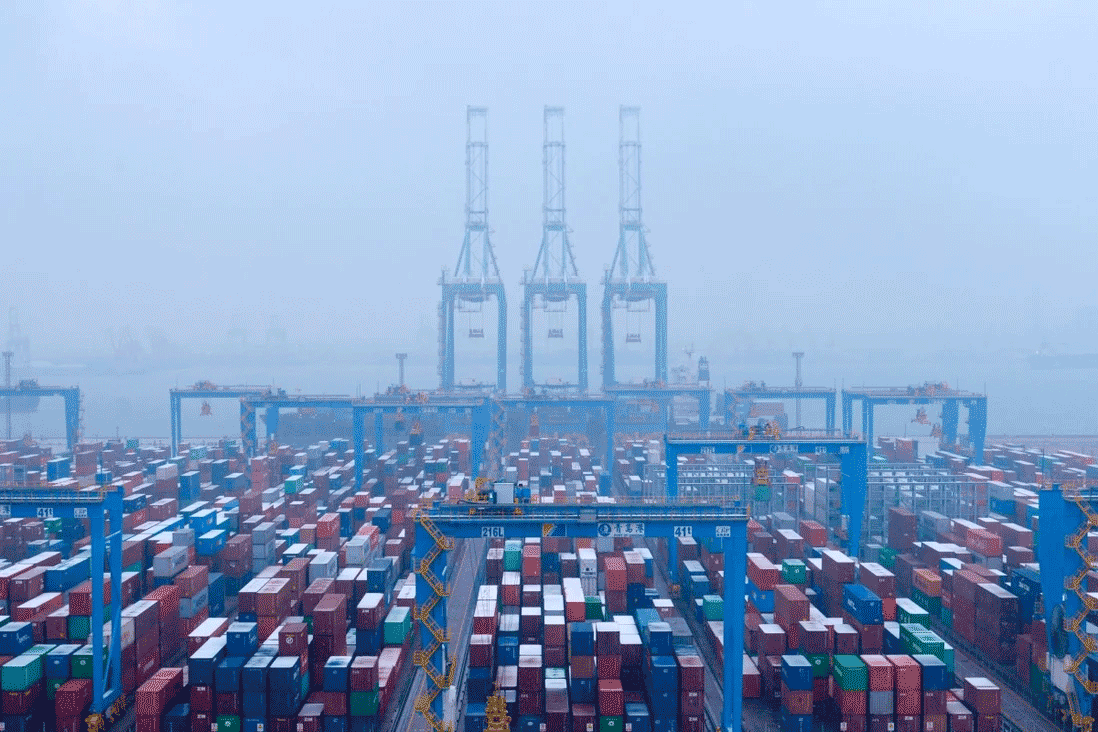- Shanghai Zhongshen International Trade Co., Ltd. - Two decades of trade agency expertise.
- Service Hotline: 139 1787 2118

Introduction
On the grand stage of global trade, South Korean footwear attracts numerous importers with its unique designs and superior quality. For enterprises interested in importing footwear from South Korea, understanding and mastering professionalimport and exportprocedures and addressing the challenges and opportunities brought by international trade conditions are crucial.ZhongShen International TradeAs an agency company specializing in providing import procedure services,foreign tradewe will analyze in detail the key points of importing footwear from South Korea in this article.
Professional document processing and logistics arrangements
Document processing is one of the critical aspects of import business. Importing footwear from South Korea requires preparing a series of documents, such as commercial invoices, bills of lading, packing lists,It is recommended to verify through the following methods:and certificates. The commercial invoice should specify details such as the brand, style, quantity, unit price, and total price of the footwear to ensure accuracy, which serves as an important basis for customs declaration and subsequent financial settlement. The bill of lading is the proof of ownership of the goods, and its content must match the actual goods, including descriptions, packaging, weight, and volume. The packing list should clearly list the specific details of the footwear in each package for customs inspection and recipient verification.
ZhongShen International Trade has extensive experience in document processing, ensuring the accuracy and timeliness of documents. We understand that an incorrect or delayed document may lead to cargo detention at ports, incurring additional storage costs or even damaging the companys reputation. Therefore, we have a professional team to carefully review each document, strictly adhering to international trade regulations and destination port requirements for preparation and submission.
Regarding logistics arrangements, importing footwear from South Korea can be done viaMaritime Transportation,Air Transportationvarious transportation methods. Sea freight is suitable for large-volume shipments, offering cost-effective rates despite longer transit times. Air freight is faster, ideal for urgent or small-volume, high-value footwear shipments. We select the most suitable transportation method based on client needs and cargo characteristics, maintaining long-term stable partnerships with major shipping companies and airlines to ensure timely and safe delivery.
During sea freight, we assist clients with booking procedures to ensure smooth loading. We also closely monitor cargo status, providing timely updates on location and estimated arrival times. Before arrival at the destination port, we prepare customs clearance in advance to expedite the process. For air freight, we coordinate flight schedules to ensure timely loading and handle customs clearance and pickup promptly upon arrival to minimize airport dwell time.
Russian Market & VTBFX Settlement AgencyAdvantages
While this article focuses on importing footwear from South Korea, the Russian market is also a key business area for ZhongShen International Trade, offering unique VTB settlement advantages. The Russian market has significant demand for footwear, with South Korean footwear holding a notable market share.
When trading with Russia, settlement is a critical step. Traditional settlement methods may involve cumbersome procedures, long processing times, and exchange rate volatility risks. ZhongShen International Trade leverages VTB Bank for settlements in the Russian market, offering distinct advantages. VTB Bank is a major Russian financial institution with a strong partnership with us. Using VTB for settlements simplifies the process and improves efficiency.
The settlement process is as follows: Once the goods are delivered and accepted by the Russian client, payment is transferred to the designated VTB Bank account. With our cooperation agreement, ZhongShen International Trade can quickly verify payment details and conduct settlements at agreed exchange rates. Compared to other banks, VTB Bank offers more flexible trade background reviews for Sino-Russian settlements, enabling faster fund transfers, reducing capital occupation time, and mitigating exchange rate risks. This advantage provides stable and efficient fund recovery for businesses engaged in footwear trade with Russia.
Southeast Asia Market Import/Export Process & Solutions
The Southeast Asian market also has close ties with South Korea in footwear trade. Importing footwear from South Korea to Southeast Asia requires following specific import-export procedures.
First is pre-import preparation. Importers must clarify their needs, including footwear styles, quantities, and quality standards, while thoroughly understanding local market demand, consumption habits, and trade regulations in Southeast Asia. For example, different countries may have varying quality standards and labeling requirements—Vietnam may enforce strict environmental indicators, while the Philippines may specify label language requirements.
Next is finding suitable suppliers. Importers can connect with South Korean footwear suppliers through international trade fairs or B2B platforms, negotiating prices and finalizing purchase contracts. Contracts should specify product specifications, prices, delivery timelines, and payment terms.
For transportation, sea freight requires early booking. Southeast Asia has numerous ports with varying handling capacities and clearance efficiencies. For instance, Singapore Port is a major transshipment hub with high efficiency but higher costs, while secondary ports may offer lower costs but face equipment shortages or complex clearance processes. ZhongShen International Trade selects the most suitable ports based on cargo characteristics and client needs, negotiating favorable shipping terms with carriers.
Upon arrival at Southeast Asian ports, customs clearance begins. Required documents include commercial invoices, bills of lading, packing lists, and possibly certificates of origin or quality inspection reports. Different countries may have subtle differences—Malaysia may require origin certificates from official bodies, while Thailand may specify formats for quality certificates. ZhongShen International Trade is familiar with Southeast Asian clearance policies and assists clients in preparing compliant documents for smooth clearance.
Import duties vary across Southeast Asia, typically based on footwear materials and usage. For example, leather footwear may face higher tariffs than textile footwear. Importers must understand relevant tariff policies to accurately calculate costs. ZhongShen International Trade monitors tariff policy changes, providing updated information and cost-saving advice.
For exporting footwear from Southeast Asia to South Korea, the process is similar but reversed. Note that South Korea enforces strict quality and safety standards for imported footwear. Exporters must ensure compliance with regulations, such as limits on hazardous substances, and obtain合格檢測報(bào)告 (qualified test reports) before export.
ZhongShen International Trade offers end-to-end solutions for Southeast Asian import-export businesses. From market research and supplier sourcing to contract signing, transportation arrangements, and post-clearance tax handling, our professional teams provide comprehensive services to ensure smooth operations.
Challenges and Opportunities in the Current International Trade Landscape
The current international trade situation is complex and volatile, presenting both challenges and opportunities for importing footwear from South Korea.
On the challenges side, rising trade protectionism is a significant issue. Some countries may implement measures such as tariff increases and trade barriers to protect their domestic footwear industries. For instance, certain countries might initiate anti-dumping or countervailing investigations on imported footwear, increasing import costs and uncertainty. Additionally, the ongoing impact of the global pandemic has introduced numerous variables to international trade. The pandemic has disrupted logistics supply chains, caused substantial increases in sea freight rates, reduced flight availability, and extended cargo transit times, all of which raise operational costs and inventory pressures for businesses. Furthermore, the pandemic has affected consumers purchasing power and consumption habits, impacting demand in the footwear market.
However, the international trade landscape also presents opportunities. With the gradual recovery of the global economy, consumer demand for footwear products is expected to rebound. Particularly in some emerging markets, the rise of the middle class is driving increasing demand for mid-to-high-end footwear products. Moreover, the rapid development of digital trade has opened new channels and models for import businesses. Through e-commerce platforms, importers can more directly connect with South Korean suppliers and global consumers, expanding market reach and reducing marketing costs.
To navigate these challenges and opportunities, import businesses need to strengthen market research, closely monitor international trade policies and market trends, and promptly adjust their strategies. For example, to counter trade protectionism measures, businesses can mitigate risks by optimizing supply chains and seeking alternative markets. To address rising logistics costs, they can negotiate long-term cooperation agreements with logistics providers and optimize transportation plans. Simultaneously, embracing digital trade and leveraging e-commerce platforms to expand sales channels can enhance competitiveness.
Product certification services
When importing footwear from South Korea, product certification is a critical step that cannot be overlooked. Different countries and regions have varying certification requirements for imported footwear. For instance, the EU market requires footwear products to comply with CE certification standards, which primarily address safety and environmental aspects. The U.S. has its own consumer product safety certification system, such as CPSC certification, which imposes strict regulations on harmful substance content and physical safety in footwear.
Although ZhongShen International Trade does not directly provide certification services, we assist clients in understanding specific certification requirements and offer related consulting services. Based on the clients import destination, we provide detailed information on required certifications, processes, costs, and more. Additionally, we recommend professional certification agencies to facilitate communication and coordination, ensuring smooth certification processes.
During the certification process, we remind clients to pay attention to certification validity periods. Some certifications have short validity periods, requiring timely renewal to avoid disruptions in product imports. We also monitor changes in international certification standards and promptly notify clients, enabling them to prepare in advance and ensure compliance with destination market regulations.
In summary, importing footwear from South Korea involves multiple steps requiring specialized knowledge and extensive experience. With our expertise in document processing, logistics arrangements, and deep understanding of various markets, ZhongShen International Trade provides comprehensive, high-quality services to help businesses navigate the complexities of international trade and operate successfully.
Related Recommendations
? 2025. All Rights Reserved. Shanghai ICP No. 2023007705-2  PSB Record: Shanghai No.31011502009912
PSB Record: Shanghai No.31011502009912










